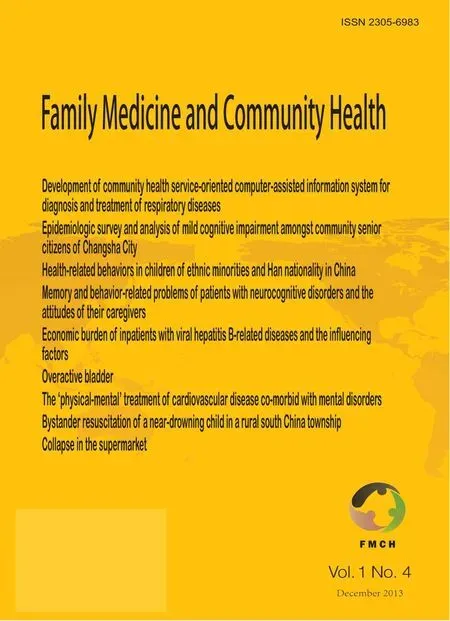Collapse in the supermarket
2013-04-18JohnMurtagh
John Murtagh
Collapse in the supermarket
John Murtagh
The story
To my concern, there was a large crowd of people (approximately 50) who had gathered around, although keeping a distance as they seemed ‘paralyzed’ by the threatening situation. Some people gave advice on management, including cardiopulmonary resuscitation. According to one bystander, the man was staggering as though he was drunk some minutes before the collapse. Unfortunately, I did not recognize him as one of my patients. I quickly assessed his vital signs and the vital signs were normal, apart from a rapid pulse.
We had been taught in medical school to perform three basic tests on the unknown unconscious patient (blood sugar, urine drug profile, and ophthalmoscopy). In this case, there was noo time or occasion for that! Thus, I looked in his pockets and wallet, hoping to find some useful medical information. Jackpot! He carried a card indicating that he was an insulindependent diabetic. Mr. X was suffering from a hypoglycaemic attack. I observed that he had prominent arm veins and that reinforced my decision to administer intravenous 50% dextrose. I drew up 25 mL from the ampoule in the doctor’s bag, applied a tourniquet and slowly injected the sticky solution into the vein. As expected, the response was dramatic as the unconscious man slowly recovered, sat up, and talked about his embarrassment at his“hypo” attack.
The spectators to this little dramatic scene were obviously impressed. Some spectators broke into applause and one was heard to say“doctors are so clever-how do they know these things?” I said that this was a basic emergency in an insulin-dependent diabetic that should be simple to treat.
Discussion
The emergency agents used to treat hypoglycaemic coma include intravenous glucose and glucagon, which can be administered by subcutaneous, intramuscular, or intravenous injection. Intravenous glucose, which is available in ampoules of dextrose or glucose of varying strengths, is the most effective preparation, but can be difficult to administer in patients withpoor veins and is prone to cause phlebitis. I prefer a larger bore cannula and follow the injection with a 2–5 mL-flush of normal saline. The most practical method is to administer 1 mL of glucagon by intramuscular injection, followed by a sweet drink or sugar placed in the mouth as the patient becomes alert. If the blood sugar is very low, e.g., levels of <3 mmol/L, at least 50 mL of 50% dextrose or glucose (as a bolus injection) and glucagon should be administered.
Note: hypoglycaemia from an oral hypoglycaemic agent occurs frequently, and affected patients may be slow to respond to treatment.
Causes of hypoglycaemia
• Insulin toxicity
• Oral hypoglycaemic drug toxicity
• Other drugs, such as quinine, salicylates, and pentamidine
• Alcohol
• Fasting
• Tumors, such as insulinoma
• Addison disease and hypopituitarism
• Post-gastrectomy and gastric ‘dumping’ syndrome
• Autoimmunity (antibodies to insulin or insulin receptors)
The unconscious patient
The unconscious patient is always difficult to manage, especially if there has been no observed cause or evidence of trauma. The blood sugar should be tested first and on-the-spot testing strips or a glucometer reading is ideal for initial assessment. If negative, further first-line investigations include a urine drug profile and a cerebral CT scan.
Confict of interest
The author declares no conflict of interest.
an urgent call from the manager of the local supermarket, which was only about 50 meters from my clinic. “Would you please come because the ambulance may take about 30 or more minutes”? The manager said that a young man who had been shopping was found unconscious and was probably dead. He may have been lying on the floor for several minutes because there were no witnesses to the collapse. I grabbed my doctor’s emergency bag and walked to the supermarket. I was confronted by the unusual sight of an unconscious man of about 30 years lying among a large assortment of cans and packets of foodstuffs that had collapsed as he fell through the stacked goods. I could see that he was breathing.
John Murtagh
Monash University, Victoria 3165, Australia
e-mail: john.murtagh@monash. edu
20 September 2013;
Accepted 5 November 2013
杂志排行
Family Medicine and Community Health的其它文章
- The ‘physical-mental’ treatment of cardiovascular disease co-morbid with mental disorders
- Economic burden of inpatients with viral hepatitis B-related diseases and the infuencing factors
- Memory and behavior-related problems of patients with neurocognitive disorders and the attitudes of their caregivers
- Health-related behaviors in children of ethnic minorities and Han nationality in China
- Epidemiologic survey and analysis of mild cognitive impairment amongst community senior citizens of Changsha City
- Development of community health service-oriented computerassisted information system for diagnosis and treatment of respiratory diseases
